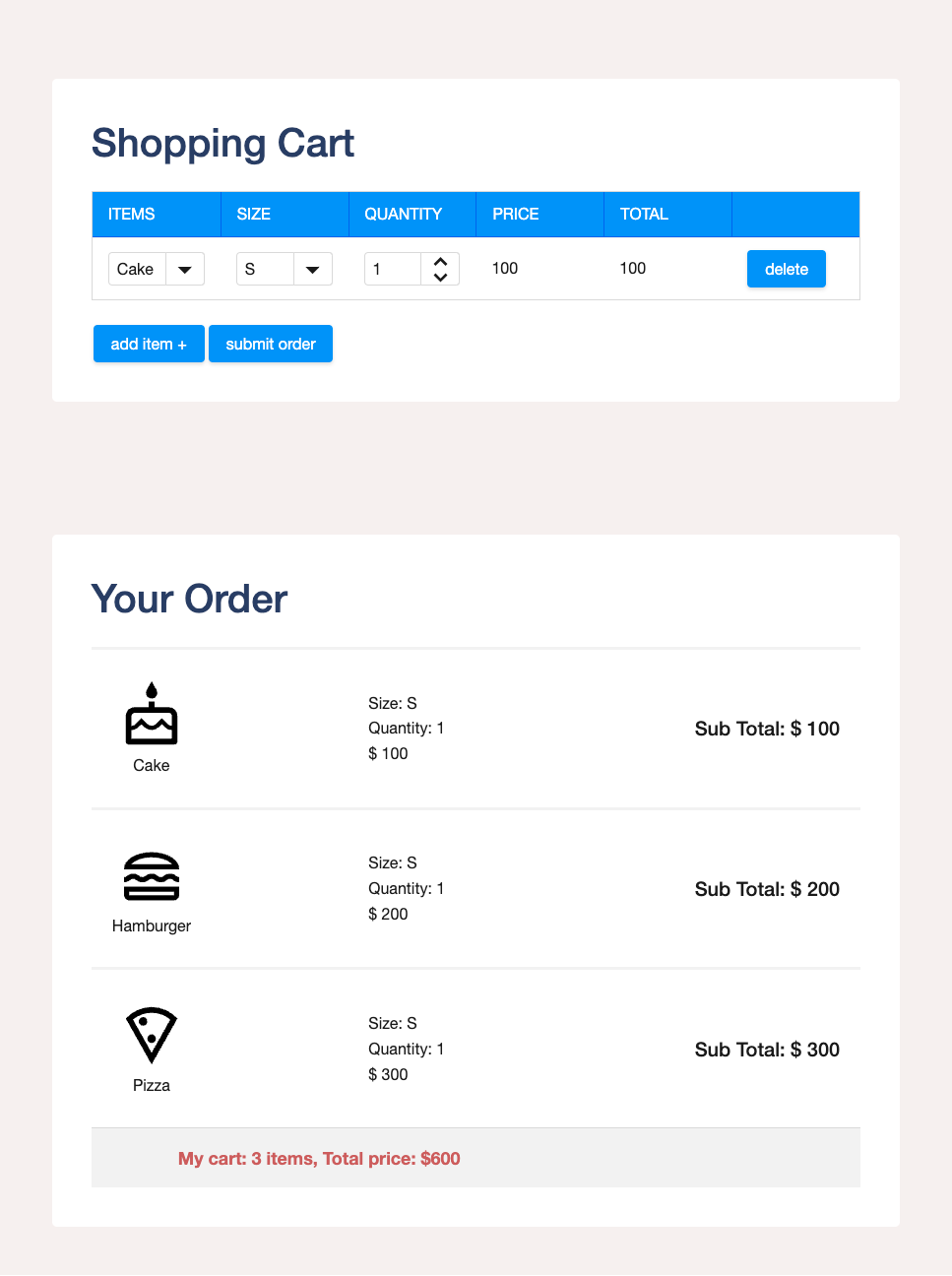Building Stateless UI"
| Line 106: | Line 106: | ||
} | } | ||
</source> | </source> | ||
| + | |||
| + | == Get User Input == | ||
| + | |||
| + | <syntaxhighlight lang='java' lang='3'> | ||
| + | ICombobox.of(initProductSize) | ||
| + | .withReadonly(true) | ||
| + | .withAction(ActionType.onChange(this::doSizeChange)) | ||
| + | </syntaxhighlight> | ||
= Update Widget State = | = Update Widget State = | ||
Revision as of 06:24, 24 November 2023
Setting up
To set up stateless components in a ZK 10 application, you need to include the stateless components module and define a Dispatcher Richlet Filter in your WEB-INF/web.xml file.
Including Required Jar
dependencies {
implementation "org.zkoss.zk:stateless:${zkVersion}"
...
}
Dispatcher Richlet Filter
<filter>
<filter-name>DispatcherRichletFilter</filter-name>
<filter-class>org.zkoss.stateless.ui.http.DispatcherRichletFilter</filter-class>
<init-param>
<param-name>basePackages</param-name>
<param-value><!-- your base packages --></param-value>
</init-param>
</filter>
<filter-mapping>
<filter-name>DispatcherRichletFilter</filter-name>
<url-pattern>/*</url-pattern>
</filter-mapping>
Example Application
We will use the simple shopping cart application as an example to introduce basic features of stateless components:
Building UI with Richlet
Building user interfaces (UI) with stateless components requires creating a StatelessRichlet and mapping a URL to that richlet.
URL Mapping
We use @RichletMapping to compose a URL. When users visit that URL, ZK will invoke the corresponding method.
For example below, the index() URL will be <protocal>:// <host name: port> /shoppingCart.
@RichletMapping("/shoppingCart")
public class DemoRichlet implements StatelessRichlet {
@RichletMapping("")
public List<IComponent> index() {
//return ...
}
}
Class-Level Mapping
At this level, @RichletMapping defines the base path for all methods in a StatelessRichlet. For example, assigning @RichletMapping("/shoppingCart") to the DemoRichlet class sets a foundational path for all UI components it manages.
Method-Level Mapping
Within the StatelessRichlet, each method can specify further URL mapping. By applying @RichletMapping("") to a method, the specified path appends to the class-level path.
Composing the UI with Stateless Components
Before ZK 10, ZK components are stateful, meaning that the server holds the state. Starting from ZK 10, we provide a set of stateless components as Immutable objects. Immutable objects are constructed once and can not be changed after they are constructed. After Immutable objects are rendered, they will be destroyed. Since the component state will not be saved on the server, they consume less memory.
UI Composing
With stateless components, ZK offers a streamlined, fluent API for building user interfaces.
- Every classic component has a corresponding stateless version, identified by an "I" prefix, denoting "immutable."
- Stateless components employ a builder pattern, using methods like
of()for initializing properties andwithSclass()for setting classes.
Here's a comparison of UI composition between classic and stateless components:
Classic Component in ZK 9
Button button = new Button("add items");
button.setSclass("add-items");
Equivalent Stateless Component in ZK 10
IButton.of("add items")
.withSclass("add-items");
Event Wiring
To wire an action handler method for an event, you need to call withAction(ActionHandler action) with a public method reference:
IButton.of("add item +")
.withSclass("add-items")
.withAction(ActionType.onClick(this::addItem))
- Line 3: it means register
addItem()as an action handler foronClickevent onIButton. ActionType supports all types of component events.
In stateless components, we use the term 'action handler', which distinctly separates it from the event listener associated with classic components.
Hence, when a user clicks the button above, ZK will invoke addItem() declared in the Richlet.
Obtain Widget State
Since a server no longer holds a component's state (it's on the client side), we provide @ActionVariable to access a UI component's state sent from the client. When ZK invokes an action handler for an event, it will pass the corresponding parameters you specified.
@ActionVariable(targetId = ActionTarget.SELF, field = "id")retrieves the value from thefieldof a component with thetargetIdon the client.ActionTarget.SELFrepresents the component associated with the event which is a button. Please see ActionTarget for other targets.
public void addItem(@ActionVariable(targetId = ActionTarget.SELF, field = "id") String orderId) {
}
Get User Input
ICombobox.of(initProductSize)
.withReadonly(true)
.withAction(ActionType.onChange(this::doSizeChange))Update Widget State
ZK provides various APIs on UiAgent to update a widget's state. You need to call its method in an action handler method. The widget states will be updated to the client after executing the method.
The following code adds the specified child component as the last child to the component found by Locator.
@Action(type = Events.ON_CLICK)
public void addItem(@ActionVariable(targetId = ActionTarget.SELF, field = "id") String uuid) {
UiAgent.getCurrent().appendChild(Locator.ofId(SHOPPING_CART_ROWS),
renderShoppingCartOneItem(parseOrderId(uuid)));
}
Example Application
You can download the shopping cart demo project.
